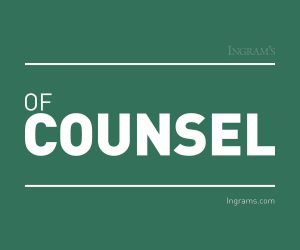HOME | ABOUT US | MEDIA KIT | CONTACT US | INQUIRE
HOME | ABOUT US | MEDIA KIT | CONTACT US | INQUIRE
Questions of access grow more challenging in an age of more advanced technology.
Technology has changed the landscape for the way college and university students are educated. The days of professors’ handing out paper copies of a class syllabus, students taking tests in blue books and handwriting notes are essentially extinct. Receiving and submitting assignments, enrolling in classes, taking and submitting exams, and reading class assignments via Web sites and apps are the norm today.
Colleges and universities, however, must be cognizant of legal requirements for accessibility to these technologies for students with disabilities, as well as reasonable accommodation requests for assistive technology.
Title II of the Americans with Disabilities Act governs state-funded schools, and Title III of the ADA governs private colleges and vocational schools. If a school receives federal funding, regardless of public or private status, Section 504 of the Rehabilitation Act requires officials to make their programs accessible to qualified students. Between the ADA and the Rehabilitation Act, most colleges and universities will be required to provide some level of reasonable accommodation, including accessibility to computer-assistive technology for students with disabilities.

A “disability” is defined under the ADA and Section 504 of the Rehabilitation Act as a physical or mental impairment that substantially limits one or more major life activities of the individual; a record of such impairment; or a person who is regarded as having the impairment. In postsecondary education, a qualified student (someone who meets the academic admission criteria) with a disability cannot be “screened out” or suffer discrimination based on a disability. Rather, students with disabilities must be provided reasonable accommodations upon request, including modifications to rules, policies or practices, the removal of architectural, transportation or communication barriers, or accommodations through the use of auxiliary aids or services. Modifications, including technological aids, m ust be provided when it is necessary for a student with a disability to have an equal opportunity to participate in, and reap the benefits of, an educational program or activity.
ust be provided when it is necessary for a student with a disability to have an equal opportunity to participate in, and reap the benefits of, an educational program or activity.
These decisions are typically made on a case-by-case basis and are legally required to be provided to a
 student with a disability—without additional fees—unless shown to be an undue burden administratively or financially to the institution, or if the accommodation is a threat so
student with a disability—without additional fees—unless shown to be an undue burden administratively or financially to the institution, or if the accommodation is a threat so
ehow to the student or others. A college or university may provide a student with a disability a different or separate aid, benefit, or service from a student without a disability, but only if that aid, benefit, or service is equally effective.
Reasonable accommodations, in the traditional college and university context, could include the use of a service animal (e.g., seeing-eye dog), note-taking assistance, interpreters or special classroom seating. Colleges and universities, however, must be cognizant of other
accommodations, including when new technology can assist a student with a disability, or when new technology is offered to all students but the technology is not usable for some.
For example, many colleges and universities have faced of threats of lawsuits by students and the Office of
Civil Rights for using e-readers that were not functional for blind students because the devices lacked
accessible text-to-speech functions. The menus and controls were displayed visually only, with no audio
option, so blind students could not operate the settings, select books, or even turn on the TTS feature. This type of emerging technology was “cutting-edge” and provided non-blind college students with the ability to traverse campus free of books and access multiple books with one device. But it was not functional for blind students.
To the extent a college or university provides technology to the general student population, including access to interactive Web sites, e-readers, or other computer-aided devices, that technology must also be accessible to students with disabilities who have been admitted to the school. In addition, when a student with a disab
lity voluntarily requests the use of certain technology to assist him or her in achieving success in academics, the college or university must assess that request and determine if the request is related to the student’s disability.
Offiicals must also determine if such technology will overcome the student’s functional limitations. A college or university must have a sufficient budget to cover these additional expenses and should include these requirements as part of its efforts to create a diverse student body.
Often, colleges and universities will overlook the legal requirements, resulting in potential liability as well as creating the distinct possibility of investigations and potential claims brought by the Department of Education and the OCR. Public knowledge of such claims and investigations poses as much a threat to a college or university’s reputation than almost any other bad publicity experience.
To the extent a college or university needs assistance in drafting policies or procedures on these topics, navigating federal regulations regarding obligations to accommodate students with disabilities, or assessing and providing appropriate accommodations, they should consult experienced legal counsel.